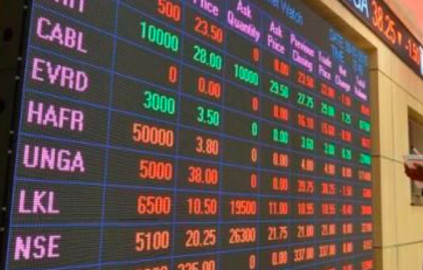Beware the Risks of Margin Trading


Audio By Vocalize
Kenya’s Capital Market Regulator the CMA, has taken steps to develop capital markets and trading ecosystem in Kenya. Local brokers and NSE have discounted transaction fees to encourage retail Investors and traders to enter the markets.
There are two types of retail participants in markets i.e.: day traders who buy & sell securities multiple times a day and long-term investors who invest in securities for longer duration.
Intraday Trading on shares was recently launched on NSE since then it has picked up. ‘’Day trading is a welcome move for investors who have previously lobbied for the activation of the intraday trading, as seek to take advantage of intraday price movements and increase their profit margins’’, said Geoffrey Odunda, the CEO of the Nairobi Securities Exchange.
Day trading is done in various markets like forex, stocks, indices, derivatives etc.
While investing in stocks for the long term can help create generational wealth, adrenaline packed short term day trading with leveraged funds and margin can do the opposite.
Not to deter you from trying, we can only discuss the risks you will encounter while trading with margin.
What is Margin Trading?
This is simply borrowing money from your broker to buy or sell Securities. Margin is usually expressed as a percentage. To see the exact margin requirements, you need to open a margin calculator with your broker.
It is not compulsory to trade using margins if you are rich enough, you could choose not to borrow.
Most big financial institutions trade without margin or leverage, or with very low margin, because they have access to billions in capital and they have experts with the technical know-how, working for them.
Margin is usually set by the broker & the exchanges, and may vary from one broker to another and one financial product to another.
They are two kinds of margin namely:
• Initial margin
• Maintenance margin.
(a) Initial margin.
This is the minimum amount of cash a trader needs to deposit in his margin account before opening a position.
Forex Brokers in Kenya require an initial margin of as low as 0.25% of transaction value for forex trading.
If transaction value is Ksh 100,000, and initial margin is set at 0.25% then the trader will need to deposit only Ksh 250 in his account before trading can commence. The broker loans him the balance of Ksh 99,750.
With such low initial margin requirements by Kenyan forex brokers, traders should self-regulate and not use too much margin as they still have to repay the loan even if they suffer a loss in the trade.
When you trade without margin:
If a forex trader wants to buy one standard lot (i.e., 100,000 units) of EUR/USD currency pair without using margin and the exchange rate is 1.1100, the forex trader will need to have $100,000 in his account.
(Note: for a EUR/USD pair, the EUR is the base currency and USD is the quote currency)
When you trade with margin:
Following the example above, if the trader used a margin of 2% to open a trading position for 100,000 units of EUR/USD currency pair, He would have needed to make a down payment of just $2,000 (2% of $100,000) while the forex broker loans him the difference.
(b) Maintenance margin
This is the minimum amount an equity trader must leave untouched in his account.
This must be maintained at all times to keep his positions open. It is expressed as a percentage. Maintenance margin is the total value of securities in portfolio minus margin loan borrowed from your broker.
If a value 100 shares of a stock is Ksh 100,000 with Ksh 50,000 coming from a margin loan, it means the real value of the account as at that time is just Ksh 50,000.
If the maintenance margin is set at 25% it means the balance in your trading account must not go below 25% of the real value.
In this case, 25% of 50,000 is Ksh12,600 and the maintenance margin has been met.
If the value of stock in your margin account falls below the maintenance margin level, a margin call is triggered and the trader is asked to urgently top up the funds in his trading account.
According to the CMA handbook on CCP clearing of futures and derivatives contracts, clearing members (CM) can only fund the trader’s margin call for up to 72 hours after which they have to liquidate the trader’s position if the variation margin still remains unpaid.
Is margin the same thing as leverage?
They are built on the same principle but margin is the minimum amount needed to open a trade position while leverage is a ratio of trader’s capital to the trading position he can control.
Leverage is calculated as 1/ Margin. If margin is 4%, then the leverage is 1/0.04 = 25
Therefore, the leverage will be a ratio 25:1
Margin is also 1 divided by leverage. So, if leverage is 400:1 the margin is 1/400 = 0.0025 or 0.25%. There is an inverse relation between margin & leverage.
Forex margin vs. Equity margin
Equity margin: This is when a trader takes a loan from his stock broker to trade equities.
Example if 10 units of an equity cost Ksh 10,000 and margin is 50%, to open a trading position, the trader deposits 50% of Ksh 10,000 in his account. The trader deposits just Ksh 5000.
Forex Margin: When trading forex, margin refers to the amount of money a trader is mandated to deposit by forex broker to open a position. The margin requirements in forex trading are quite low.
Risks of using Margin/Leverage
Margin is a two edged sword which amplifies both profits and losses. Here is why.
Leverage risk in equity trading
Derivative instruments like Futures contracts let you use leveraged funds to trade on the rise or fall of an underlying instrument’s price like Equity without owning the underlying Security.
When you trade on the rise of that equity, it’s called going long and when you trade on the fall in price it’s called going short.
To buy a derivative contract, you pay a margin which is a fraction of the price of the actual instrument, while your broker lends you the rest. This is referred to as Margin trading.
Example
Miss. Michelle is a Kenyan Trader and she carries out an analysis on a Telecom stock and concludes that the value is likely to appreciate. She wants to buy 1,000 units of stock to sell when the value appreciates but doesn’t have enough money.
She approaches her broker for a margin loan to trade on the anticipated price increase of the stock. See details below.
Price per unit of Stock= Ksh5
Margin rate= 15%
Number of contracts ordered= 1 (let’s say it is 1,000 units)
Going further, we see that
1,000 units @ Ksh 5 each= Ksh 5,000 (without margin Ms. Michelle would have needed to pay Ksh5,000 to trade)
Since the margin is 15%, she only has to deposit 15% of 5,000 or Ksh 750 to open her trading position.
(Note: with 15% margin Ms. Michelle needs just Ksh 750 to start trading.
The danger:
If her analysis was wrong, the value of Stocks falls to Ksh 4.5 she is forced to sell as follows
1,000 units @ Ksh 4.5 = Ksh 4,500
She loses Ksh 500 of her capital. If the price drops even more, then the broker will require her to deposit more money in her account to cover the margin.
Leverage risk in Forex trading
Forex brokers in Kenya can give retail traders up to 400:1 leverage thus increasing the trader’s exposure.
A 30:1 leverage means that for a standard lot of 100,000 units of Currency around $3,000 deposit by trader will enable him to control $100,000.
However, 400:1 leverage means that for a standard lot of 100,000 units of Currency the trader only needs to deposit $250 i.e. (1/400 x 100,000 units) to control $100,000 worth of currency.
Example:
Let’s say you want to buy 1 standard lot (100,000 units) of EUR/USD currency pair exchanging at 1.1122
Capital without leverage = $100,000
But you want leverage/borrowed funds so as to increase your returns.
If your broker gives you a leverage of 1:100 then Capital with leverage = 100 x $1000 = 100,000
The danger:
If the EUR/USD exchange rate falls to 1.1022, you have to sell at a loss so as to close your trading position. The difference between closing and opening exchange rates is 1.1122-1.1022= 100pips
You make a loss of $10 * 100= -$1000
This is your entire trading capital.
So, you can see that leverage increases your trading exposure but amplifies your losses. Leverage should be used very carefully.
Risk of a Margin call
When the value of the asset in a trader's account due to losses goes below a certain level, the trader is contacted by the broker to fund his account through cash to bring it up to par with the maintenance margin.
This is known as a margin call. If the trader still does not have enough margin, then the broker will liquidate the position at the Stop-out level.
For example, In Kenya, the Stop out level at forex brokers is 30%.
If a margin account has 10,000 KSh in it and out of it 5,000 KSh came from a margin loan then the real value of the assets in the margin account is 5,000 KShs.
Now 30% of 5,000 KShs is 1,500 KShs so if the losses in your trading account causes your balance to drop to 30% of your balance, and if the balance ever falls below 1,500 KSh, a margin call will be issued.
The trader will be asked to come and deposit more money to bring the account above KSh 1,500. failing which all his trading positions will be closed and he will bear the loss.
This is the concept of the margin call.
When a trader uses too much leverage, he risks a margin call due to excessive losses.
If a trader buys stock of a company using a margin and the stocks drop in value, his losses will increase. This could trigger a margin call.
It is advisable for day traders not to use more than 5:1 leverage.


Leave a Comment